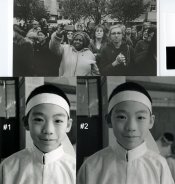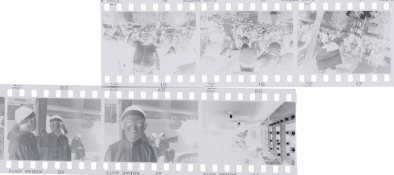RalphLambrecht
Subscriber
filter changes always require an exposure correction. it's un avoidable no matter what the filter manufacturer's claim may be.
My own experience with this paper/developer combination is one of diminshing returns after the first minute. Still, I might experiment to see how the highlights are affected relative to the shadows after the first minute. ...
yes, but it's a promise no filter supplier has been able to keep yet,
which midtone gray is supposedly to staying constant?
and second, is that always the right tone the exposure is judged by?
If you try to judge exposure based on black, white or some other gray, you are not using the filter set properly as designed. I'd ignore criticism of a product what was used incorrectly.
Rafal Lukawiecki;This agrees with what I read in Ralph's book said:exactly.keeping a meaningful highlight density constant is what a truly matched exposure system delivers. anythin else is a nice try.
i could not have said it better myself.It works as designed, but I think Ralph is levelling his criticism at the design.
The calibration technique from Paul Butzi in the original post describes calibrating to have consistent exposure for the highlights, which I think is what Ralph wishes the filter manufacturer had done.
So if you have a Dichroic head, you have a choice of approaches.
p.s. I use graded paper, so maybe I don't know what I'm talking about.
...but this print/scan looks as though the negative is quite thin (ie underexposed) and also possibly underdeveloped....


Well, the negatives still look significantly underexposed to me.
But if we agree that the two frames under consideration (15 and 27) have roughly the same density, I'm confused as to why I was able to get a really contrast print on grade 2 paper (frame 27, print #1).
If you are referring to the two pictures of the boys then the more contrasty print was in fact grade 2 as the paper's natural grade is 2 without any filtration. On the other you have used a grade 1 filter which is why it is less contrasty and flat looking. I much prefer the non filtered print but I'd give a grade 1.5 a try as the unfiltered grade 2 might be just slightly too contrasty but we are getting into a very subjective area now
pentaxuser
It would be easier for you to produce negatives that print well on grade 2. Develop them longer and you won't need to use grade 5.
I would agree with this post and go further by saying that you should (where possible) produce negatives that require no filtration, given your film development procedure and enlarger type/set up.
| Photrio.com contains affiliate links to products. We may receive a commission for purchases made through these links. To read our full affiliate disclosure statement please click Here. |
PHOTRIO PARTNERS EQUALLY FUNDING OUR COMMUNITY:  |


